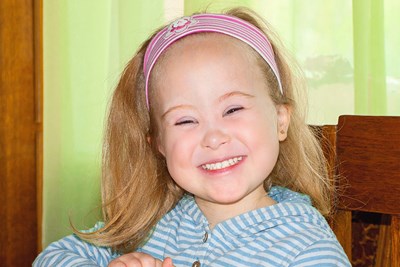One in every 691 babies in the United States is born with Down syndrome, which makes it the most common genetic condition that affects children. Down syndrome is characterized by intellectual disabilities, developmental delays, and distinct physical features.
Causes of Down Syndrome
There are supposed to be 23 pairs of chromosomes in all human cells, with one part of the chromosome pair coming from the father and one coming from the mother. However, there is sometimes abnormal cell division in one of the chromosomes, which results in extra genetic material or an extra chromosome altogether. Down syndrome is the result of an extra portion of chromosome 21 present in some or all of the body's cells. Because of the extra genetic material, the course of development is altered, leading to the common characteristics that are associated with the condition.
Types of Down Syndrome
There are different types of Down syndrome that have different reasons for causing this abnormal cell division in chromosome 21 to occur. The three genetic variations that lead to Down syndrome include:
-
Trisomy 21: Also known as nondisjunction Down syndrome, this accounts for approximately 95% of cases and is the most common variation of Down syndrome. Nondisjunction is caused by an error during the division of cells, which usually occurs during the development of the sperm or egg cell. The result is three copies of chromosome 21 instead of the usual two. These irregular copies are replicated in every cell of the body as the fetus develops.
-
Mosaic Down syndrome: Also known as mosaicism, this type of Down syndrome is the least common form and accounts for only 1% of all cases. People with mosaic Down syndrome have a mixture of two types of cells in their body, with some containing the usual 46 chromosomes and some containing 47. The abnormal cell division associated with this type of Down syndrome occurs after fertilization of the egg with the sperm.
-
Translocation Down syndrome: This type of Down syndrome accounts for about 4% of all cases. Translocation occurs when part of chromosome 21 becomes attached to another chromosome, which is usually chromosome 14. While people with translocation Down syndrome still have the usual 46 chromosomes, the presence of the extra material causes the characteristics associated with Down syndrome to occur.
Risk Factors for Down Syndrome
There are some factors that will increase your risk of having a child with Down syndrome. These include:
-
Maternal age: As eggs age, they have a greater risk of improper chromosome division. This means that by the age of 35, a woman’s risk of having a child with Down syndrome is about 1 in 350, but by the age of 45, the risk is about 1 in 30.
-
Genetics: One type of Down syndrome (translocation) is able to be passed down from parent to child.
-
Having a child with Down syndrome: If you already have a child with Down syndrome, your risk of having another child with Down syndrome is increased to about 1 in 100.



